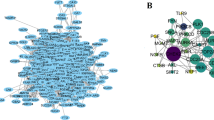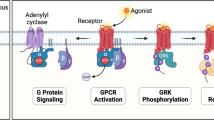Abstract
The search of selective agonists and antagonists of membrane progesterone receptors (mPRs) is a starting point for the study of progesterone signal transduction mechanisms mediated by mPRs, distinct from nuclear receptors. According to preliminary data, the ligand affinity for mPRs differs significantly from that for classical nuclear progesterone receptors (nPRs), which might indicate structural differences in the ligand-binding pocket of these proteins. In the present work, we analyzed the affinity of several progesterone derivatives for mPRs of human pancreatic adenocarcinoma BxPC3 cell line that is characterized by a high level of mPR mRNA expression and by the absence of expression of nPR mRNA. The values were compared with the affinity of these compounds for nPRs. All tested compounds showed almost no affinity for nPRs, whereas their selectivity towards mPRs was different. Derivatives with an additional 19-hydroxyl group and removed 3-keto group had the highest selectivity for mPRs. These results suggest these compounds as the most selective progesterone analogs for studying the mechanisms of progestin action via mPRs.
Similar content being viewed by others
References
Smirnov, A. N. (2006) Elements of Endocrine Regulation [in Russian], GEOTAR-Media, Moscow.
Tokmakov, A. A., and Fukami, Y. (2009) Nongenomic mechanisms of progesterone, Tsitologiya, 51, 403–416.
Zhu, Y., Bond, J., and Thomas, P. (2003) Identification, classification, and partial characterization of genes in humans and other vertebrates homologous to a fish membrane progestin receptor, Proc. Natl. Acad. Sci. USA, 100, 2237–2242.
Thomas, P., Pang, Y., Dong, J., Groenen, P., Kelder, J., De Vlieg, J., Zhu, Y., and Tubbs, C. (2007) Steroid and G protein binding characteristics of the seatrout and human progestin membrane receptor alpha subtypes and their evolutionary origins, Endocrinology, 148, 705–718.
Atif, F., Yousuf, S., and Stein, D. G. (2015) Anti-tumor effects of progesterone in human glioblastoma multiforme: role of PI3K/Akt/mTOR signaling, J. Steroid Biochem. Mol. Biol., 146, 62–73.
Atif, F., Sayeed, I., Yousuf, S., Ishrat, T., Hua, F., Wang, J., Brat, D. J., and Stein, D. G. (2011) Progesterone inhibits the growth of human neuroblastoma: in vitro and in vivo evidence, Mol. Med., 17, 1084–1094.
Karteris, E., Zervou, S., Pang, Y., Dong, J., Hillhouse, E. W., Randeva, H. S., and Thomas, P. (2006) Progesterone signaling in human myometrium through two novel membrane G protein-coupled receptors: potential role in functional progesterone withdrawal at term, Mol. Endocrinol., 20, 1519–1534.
Kelder, J., Azevedo, R., Pang, Y., De Vlieg, J., Dong, J., and Thomas, P. (2010) Comparison between steroid binding to membrane progesterone receptor alpha (mPRalpha) and to nuclear progesterone receptor: correlation with physicochemical properties assessed by comparative molecular field analysis and identification of mPRalphaspecific agonists, Steroids, 75, 314–322.
Lisanova, O. V., Shchelkunova, T. A., Morozov, I. A., Rubtsov, P. M., Levina, I. S., Kulikova, L. E., and Smirnov, A. N. (2013) Approaches to the design of selective ligands for membrane progesterone receptor alpha, Biochemistry (Moscow), 78, 236–243.
Goncharov, A. I., Maslakova, A. A., Polikarpova, A. V., Bulanova, E. A., Guseva, A. A., Morozov, I. A., Rubtsov, P. M., Smirnova, O. V., and Shchelkunova, T. A. (2017) Progesterone inhibits proliferation and modulates expression of proliferation-related genes in classical progesterone receptor-negative human BxPC3 pancreatic adenocarcinoma cells, J. Steroid Biochem. Mol. Biol., 165, 293–304.
Smirnov, A. N., Pokrovskaya, E. V., Shevchenko, V. P., Nagaev, I. Yu., Myasoedov, N. F., Levina, I. S., Kulikova, L. E., and Kamernitsky, A. V. (2002) Species and tissue distribution of proteins binding 16a,17a-cycloalkanoprogesterone derivatives, Bioorg. Khim., 28, 251–257.
Fedyushkina, I. V., Skvortsov, V. S., Romero Reyes, I. V., and Levina, I. S. (2013) Molecular docking and 3D-QSAR of 16a,17a-cycloalkanoprogesterone derivatives as ligands of the progesterone receptor, Biomed. Chem., 8, 168–176.
Zolottsev, V. A., Zavarzin, I. V., Shirinyan, V. Z., and Levina, I. S. (2013) Synthesis of Eand Z-isomeric progesterone 3O-methyloximes, Russ. Chem. Bull., 62, 2086–2087.
Semeikin, A. V., Fedotcheva, T. A., Levina, I. S., Kulikova, L. E., Zavarzin, I. V., Tikhonov, D. A., Kareeva, E. N., and Shimanovskii, N. L. (2014) Synthesis and cytostatic activity of some pregna-D'-pentarans studied on HeLa cells, Khim.-Farm. Zh., 48, 9–13.
Kirk, D. N., Rajagopalan, M. S., and Varley, M. J. (1983) An improved route to 19-hydroxypregn-4-ene-3,20-dione and synthesis of its [19-2H2] analogue, J. Chem. Soc. Perkin Trans., 1, 2225–2227.
Bagli, J. F., Morand, P. F., and Gaudry, R. (1963) Synthetic studies on C-19 oxygenated pregnanes, J. Org. Chem., 28, 1207–1217.
Ashley, R. L., Arreguin-Arevalo, J. A., and Nett, T. M. (2009) Binding characteristics of the ovine membrane progesterone receptor alpha and expression of the receptor during the estrous cycle, Reprod. Biol. Endocrinol., 7, 42.
Cai, Z., and Stocco, C. O. (2005) Expression and regulation of progestin membrane receptors in the rat corpus luteum, Endocrinology, 146, 5522–5532.
Whilliams, S. P., and Sigler, P. B. (1998) Atomic structure of progesterone complexed with its receptor, Nature, 393, 392–396.
Levina, I. S., Pokrovskaya, E. V., Kulikova, L. E., Kamernitzky, A. V., Kachala, V. V., and Smirnov, A. N. (2008) 3and 19-oximes of 16a,17a-cyclohexanoprogesterone derivatives: synthesis and interactions with progesterone receptor and other proteins, Steroids, 73, 815–827.
Author information
Authors and Affiliations
Corresponding author
Additional information
Original Russian Text © A. V. Polikarpova, A. A. Maslakova, I. S. Levina, L. E. Kulikova, Y. V. Kuznetsov, A. A. Guseva, T. A. Shchelkunova, I. V. Zavarzin, O. V. Smirnova, 2017, published in Biokhimiya, 2017, Vol. 82, No. 2, pp. 247-257.
Originally published in Biochemistry (Moscow) On-Line Papers in Press, as Manuscript BM16-231, December 5, 2016.
Rights and permissions
About this article
Cite this article
Polikarpova, A.V., Maslakova, A.A., Levina, I.S. et al. Selection of progesterone derivatives specific to membrane progesterone receptors. Biochemistry Moscow 82, 140–148 (2017). https://doi.org/10.1134/S0006297917020055
Received:
Revised:
Published:
Issue Date:
DOI: https://doi.org/10.1134/S0006297917020055




